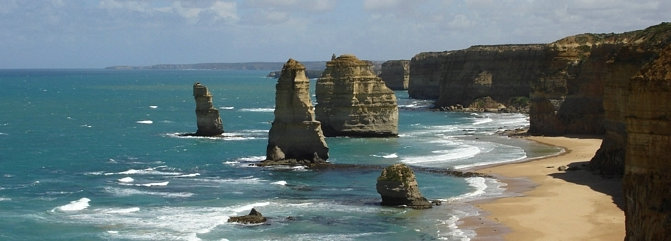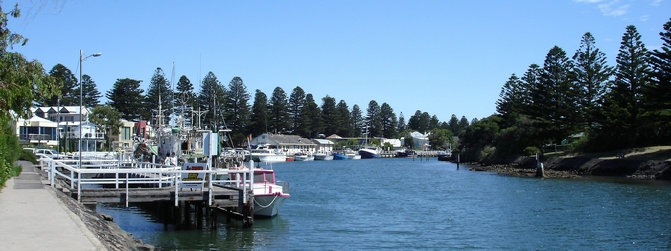Australia So Much to See




First town we came too was Nelson on the Glenelg River Estuary. There were plenty of water birds, including Black
Swans in the shallow estuary and at a surfing beach nearby. Much of the land was pine forested all the way to
Finding a roadside spot for the night was not easy, so guided by Camps Australia Wide we
went inland to the Saw Pit free camp, in the Mount Clay forest. This proved to be an ideal camping ground in which we shared
the large area with only a few other campers and a number of friendly wallabies.
Next morning we took the walk trail through the forest to the Whaler’s Lookout, where we looked down on the coastal flats and farm
lands to
At Codrington, we passed a large wind farm. We were surprised to see notices protesting against
the wind farms. They seem a sensible use of an abundant natural resource to produce power, and in
Port Fairy is a very appealing town with docks along the river for commercial cray fishing and pleasure
boats. Some buildings date back to the 1840s. We watched the tide come into the estuary, like a wave. Nearby at
the beach surfers were coming in onto a black basalt stone beach.
Tower Hill is an old volcanic crater, with hills within the crater surrounded by a lake and green plains. Quarrying has left
a limestone cliff near the entrance, which shows strata of larval soils. The interpretive centre was closed due to total fire
bans, and it was too hot to take any of the long walks. We were travelling at a time when fires raged in all states; in particular
Driving into a major dairy farming area, with cheese factories at Allansford and Timboon, we turned
at Curdie Vale.
Near here we visited dairy farming friends. They took us for a drive to
Next day, we visited the stunning features of
the Victorian south coast in the

The
From
Near Anglesea, we stopped
at Urquhart Bluff beach, where a group of school students were attending a surfing school. A lone wind surfer came late in the
day, and stayed until sunset, when a ship on the horizon was silhouetted against the rays of the setting sun. After a shower
during the night, people came along the beach walking their dogs against a silvery sunrise.
Soon we reached
We left home on the 25th January, and arrived in
Leaving